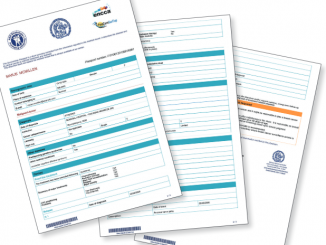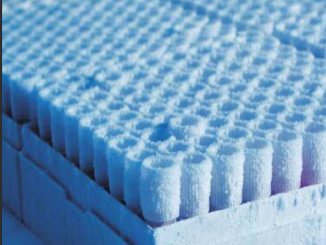Researchers now expect that samples obtained from biobanks are accompanied with well-annotated clinical data. Opened in 2010, the Breast Cancer Campaign Tissue Bank takes this criterion a step further: researchers obtaining tissues are required to return the data they generate from every sample back to the Tissue Bank.
This article was first published in Nature Reviews Clinical Oncology vol. 10 no. 3, and is published with permission. © 2013 Nature Publishing Group. doi:10.1038/nrclinonc.2013.19
Biobanks are secure storage facilities that typically contain biological samples ethically collected from human donors. These samples are made available to the biomedical research community with the aim of helping to advance research into human disease. The nature and purposes of biobanks can differ extensively, and include diverse examples such as the US Navy Tissue Bank (which was established in the 1950s and is widely regarded as the first major biobank)[1] in Bethesda, Maryland, and the Egyptian Mummy Tissue Bank at the Manchester Museum, UK.[2] In recent years, a number of biobanks have been developed to respond to the growing needs of the biomedical research community for greater access to human tissue samples for laboratory-based research.
In 2008, a gap analysis conducted on behalf of the UK charity Breast Cancer Campaign[3] identified the lack of access to well-annotated breast cancer samples as a considerable limitation to the research and, in particular, to the rapid transfer of promising laboratory findings to the clinic. To help bridge this gap, the Breast Cancer Campaign Tissue Bank was set up in 2010 as part of a coalition of four core academic centres of excellence in breast cancer research across the UK; Barts Cancer Institute, London, and the Universities of Dundee, Leeds and Nottingham, in partnership with the National Health Service. The Tissue Bank is the first widely available specialist breast cancer biobank in the UK.[4]
To make the best use of the tissues curated by biobanks, researchers require that tissues are accompanied by well-annotated data. Although there are no universally agreed guidelines, this annotation is now routine practice for most biobanks and usually includes anonymised information relating to each tissue donor, such as date of birth and gender plus follow up and survival data. More-specialised, disease-specific information is often also available. For breast cancer samples this expanded information includes tumour type, tumour grade, lymph-node involvement and hormone receptor status in addition to the information on disease-free survival and overall survival of the patient. However, the tissues represent a rich source of data that is only generally revealed by investigators when using these tissues in their research. Currently, this type of data is usually made available to the public via peer-reviewed publication, a process that is limited by the fact that published studies tend to report ‘positive’ findings because negative results are generally more difficult to publish.[5] Furthermore, the requirement to anonymise data in research publications means that even positive data cannot be associated with the relevant individual tissues by future researchers. As a result, potentially important data generated from tissues procured from biobanks is not routinely available to future researchers; certainly not in a way that permits correlative analysis across a whole series of studies investigating the same tissue set. This loss of data association could result in unknown duplications of effort as well as the wasting of the valuable tissue resources, monies provided by funding bodies and efforts of the researchers.
During the establishment of the Breast Cancer Campaign Tissue Bank we aimed to maximise the use of data derived from the available tissue samples. In addition to acknowledging the value of a large tissue resource that could cater to the challenges of research into tumour heterogeneity, we also recognised that it was crucial to develop a solution whereby data generated using these tissues could be returned to the bank and made available to other researchers. We developed this policy following discussions with the UK patient advocate group Independent Cancer Patients’ Voice,[6] whose members expressed a desire to see the best possible use of the data obtained from donated tissues to benefit future patients with breast cancer.
The policy requires researchers who obtain tissues from the Tissue Bank to return data generated from every sample back to the curators of the Tissue Bank in its raw form within two years.[7] We reasoned this would give researchers sufficient time to complete their research on these tissues and publish their data, although there is some flexibility in the timelines. To our knowledge, the Breast Cancer Campaign Tissue Bank is the first biobank to operate a data-return policy, adding considerable value to our sample holdings. As outlined in our consent forms, we do not return individual research findings to patients or their clinical team. We appreciate that many patients consider it their right to receive feedback of incidental findings and this topic has been – and continues to be – debated extensively.
To complement the data-return policy, the Breast Cancer Campaign Tissue Bank also uses a purpose-built interoperable bioinformatics platform that is freely available as an online resource.[8] This tool enables the mining of data from the breast cancer literature and the integration of different types of ‘omics’ and clinical data with publicly relevant annotations from various resources, including common portals such as the NIH’s National Center for Biotechnology Information, Ensembl, UniProt and Reactome. Over time, this online resource will enable additional mining of the data arising from research using tissues obtained from the Breast Cancer Campaign Tissue Bank. By making this information available to the wider scientific community these tissues will gain even greater value.
Much like in a normal bank, where investment portfolios take time to mature, we recognise this increase in value will not happen overnight; accumulation and maturation of data will be a slow process taking many years, but remains a key component for research. Nevertheless, the more the Tissue Bank is used the more valuable its contents will become for researchers. The processes we have adopted will enable the efficient and co-ordinated use of banked tissues, providing a rich source of data that will be invaluable for the breast cancer research community. We are keen that other biobanks follow the blueprint we have adopted at the Breast Cancer Campaign Tissue Bank as it offers a simple way of adding extra value to the samples held by biobanks.
Author affiliations
Valerie Speirs, Leeds Institute of Molecular Medicine, University of Leeds, UK; Adrienne Morgan, Independent Cancer Patients’ Voice, London, UK
Acknowledgements
We thank all members of the Breast Cancer Campaign Tissue Bank team, grant holders, staff members, patient advocates and the Operations Group. Most importantly, we thank the patients who have generously donated tissue to the Breast Cancer Campaign Tissue Bank.
References
1. Strong, D. M. The US Navy Tissue Bank: 50 years on the cutting edge. Cell Tissue Bank 1, 9–16 (2000).
2. Lambert-Zazulak, P. I., Rutherford, P. & David, A. R. The International Ancient Egyptian Mummy Tissue Bank at the Manchester museum as a resource for palaeoepidemiological study of schistosomiasis. World Archaeol. 35, 223–240 (2003).
3. Thompson, A. et al. Evaluation of the current knowledge limitations in breast cancer research: a gap analysis. Breast Cancer Res. 10, R26 (2008).
4. Breast Cancer Campaign Tissue Bank [online], (2013).
5. Anderson, G. Why publish your negative results? BioMed Central blog [online], (2012).
6. Independent Cancer Patients Voice [online], (2013).
7. Breast Cancer Campaign Standard Operating Procedures (SOPs). Breast Cancer Campaign Tissue Bank [online], (2013).
8. Breast Cancer Campaign Bioinformatics. Breast Cancer Campaign Tissue Bank [online], (2013).





